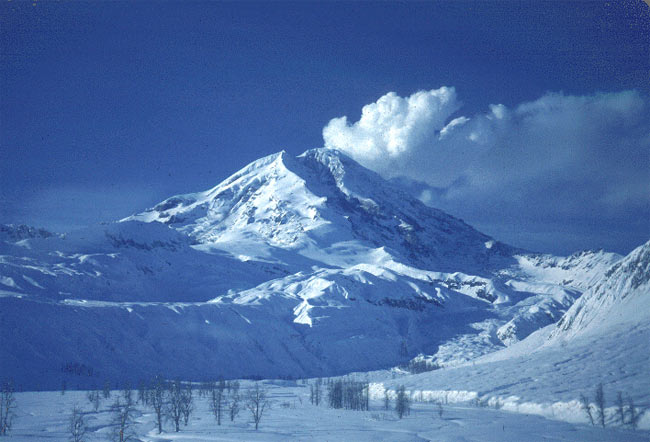Mount Redoubt Volcano Erupts Five Times, So Far

Editor's Note: Redoubt erupted for a sixth time at 7:41 p.m. Alaska Daylight Time on Monday. Updated at 10:00 a.m. EDT March 24.
Updated at 10:45 a.m. Eastern.
Mount Redoubt volcano in Alaska erupted explosively five times starting late Sunday night, nearly two months after scientists heightened concerns about the event.
The volcano's first eruption came Sunday at 10:38 p.m. Alaska Daylight Time, sending a cloud of volcanic ash to an estimated 50,000 feet above sea level. Scientists from the Alaska Volcano Observatory are monitoring the volcano closely as the eruption continues. The latest eruption was Monday at 4:31 a.m. Alaska Daylight Time, an observatory spokeswoman told LiveScience.
Wind patterns now are taking the ash cloud away from Anchorage and toward Willow and Talkneetna, two communities near Mount McKinley, North America's largest mountain in Denali National Park, according to the Associated Press.
An ashfall advisory is in effect in Alaska's Susitna Valley, 25 miles north northeast of Anchorage, until 8 a.m. Alaska Daylight Time (four hours behind Eastern time). Light ashfall was already reported at Skwentna, outside Anchorage, according to the National Weather Service. People in ashfall areas were advised to seal their windows and doors, and to protect electronics, and to cover air intakes and open water supplies.
{{ video="LS_090323_Redoubt" title="The Restive Redoubt Volcano in Alaska" caption="Redoubt volcano, which erupted overnight March 22-23, 2009, is seen here on Feb. 7, 2009, as vapor plumes emanating from holes in the newly deformed Drift Glacier near the volcano summit and on its north flank." }}
Get the world’s most fascinating discoveries delivered straight to your inbox.
A January forecast of an imminent eruption at Redoubt was based on magma rising toward the surface from beneath the volcano. And seismic activity at Redoubt, which is 106 miles (170 km) southwest of Anchorage, had increased recently.
There are more than 40 active volcanoes in Alaska, many of which are situated on the Aleutian Islands in the Pacific Ocean. Redoubt's neighboring volcano Mount Augustine (located 177 miles, or 285 km southwest of Anchorage) last blew its top in 2006.
In fact, the Aleutian Island chain makes up the northern part of the Ring of Fire, which circles the Pacific Ocean and produces frequent activity along the coasts and interior regions of North and South American and Japan. The Ring of Fire is considered one of the most volcanically and seismically active regions in the world.
The Aleutian Islands are themselves the result of volcanic activity, forming as the Pacific plate dives beneath, or "subducts," the North American plate. More than 75 percent of the world's volcanoes lie along the Ring of Fire, where tectonic plates dive beneath other plates.
- Video - The Restive Redoubt Volcano in Alaska
- Where Are Most of Earth's Volcanoes?
- Volcano Quiz: Part I



